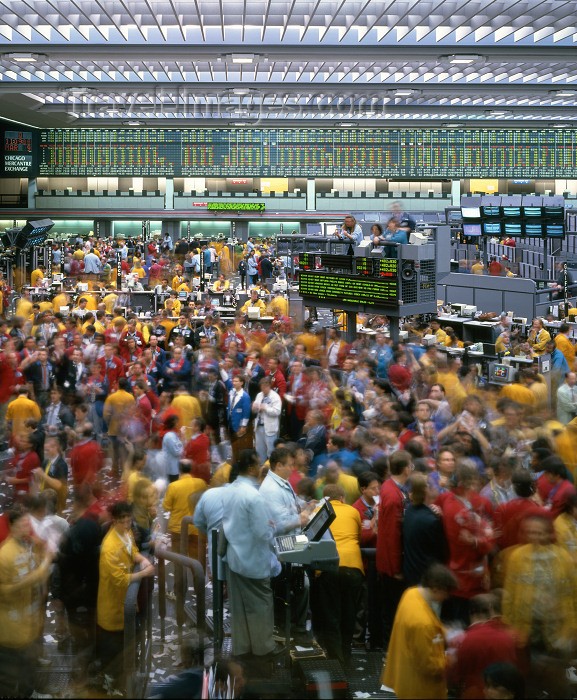CBOE Futures Exchange
Post on: 4 Июнь, 2015 No Comment

Introduction to VIX Futures
Futures on VIX, CBOE’s trademark CBOE Volatility Index, trade electronically on the CBOE Futures Exchange, LLC, using the CBOEDirect trade engine. These innovative futures provide a pure play on implied volatility independent of the direction and level of stock prices. VIX futures may also provide an effective way to hedge equity returns, to diversify portfolios, and to spread implied against realized volatility.
Contract Specifications
VIX is an implied volatility index. It measures the market’s expectation of 30-day volatility implicit in the prices of near-term S&P 500 options. VIX is quoted in percentage points, just like the standard deviation of a rate of return, e.g. 23.26. CBOE disseminates the VIX index value continuously during trading hours.
VIX Futures
VIX futures (VX) are standard futures contracts that cash settle to a Special Opening Quotation (SOQ) of VIX. VIX futures are therefore contracts on forward 30-day implied volatilities. For example, in March, a May futures is a forward contract on what 30-day implied volatility will be on the May expiration date, and a June futures is a forward contract on 30-day implied volatility on the June expiration date.
How are VIX Futures Quoted?
VIX futures are quoted in 0.05 of a point, with each futures ‘tick’ worth $50. The contract multiplier is $1000.
1. Relationship between VIX Futures and VIX
The price of a VIX futures contract is to VIX what a thirty-day forward interest rate is to a thirty-day spot interest rate. To illustrate, on July 14, 2004, VIX was 13.76 and the price of November 2004 VIX futures expiring on November 20, 2004 was 20.14. What VIX priced was the spot 30-day implied volatility, the volatility expected for the period of July 14 to August 13, 2004 and what the November VIX futures priced was a forward implied volatility, the volatility expected for the period of November 20 to December 20, 2004.
The spot/forward relationship between VIX and VIX futures has two noteworthy consequences: (a) The price of a VIX futures contract can be lower, equal to or higher than VIX, depending on whether the market expects volatility to be lower, equal to or higher in the 30-day forward period covered by the VIX futures contract than in the 30-day spot period covered by VIX
(b) There is no cost-of-carry relationship between the price of VIX futures and VIX. This is simply because there is no carry arbitrage between VIX futures and VIX as there is between a stock index futures and the underlying index. VIX is a volatility forecast, not an asset. Hence you cannot create a position equivalent to one in VIX futures by buying VIX and holding the position to the futures expiration date while financing the transaction.

Fine Points of Final Settlement
(1) When is the Final Settlement Price of VIX Futures Determined?
VIX futures are settled at the open, always thirty days before a final settlement of S&P 500 options (SPX). This way, the final settlement value of VIX is calculated from a single strip of out-of-the-money SPX options. This schedule simplifies final settlement and the unwinding of arbitrage positions. SPX options usually expire on the third Friday of the month. Eight out of twelve months of the year, successive SPX option expirations are 28 days apart, and VIX futures therefore settle on the third Wednesday of the month. For example, October 2006 VIX futures expired on Wednesday, October 18, and settled to a value of VIX determined from SPX options expiring November 17, 2006. On the other four months, successive SPX options are 35 days apart and VIX futures settle on the fourth Wednesday of the month.
(2) How is the Final Settlement Price of VIX Futures Determined?
The Final Settlement Price for VIX Futures is a Special Opening Quotation (SOQ) of VIX. The SOQ is calculated from the sequence of opening prices of the SPX option series that underlie VIX on the Final Settlement Date. The opening prices are determined in a special opening auction conducted for each option series. This procedure is analogous to the method used for the final settlement of U.S. exchange-traded stock index futures. Its purpose is to help market participants unwind and hedge VIX futures positions by making the Final Settlement Price a traded price.
cfe.cboe.com/Products/settlement_VIX.aspx
* The methodology of the CBOE Volatility Index is owned by CBOE and may be covered by one or more patents or pending patent applications.














